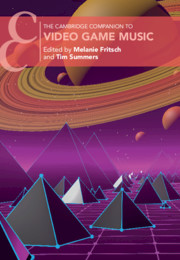Book contents
- The Cambridge Companion to Video Game Music
- Cambridge Companions to Music
- The Cambridge Companion to Video Game Music
- Copyright page
- Contents
- Figures
- Tables
- Musical Examples
- Contributors
- Preface
- A Landmark Timeline of Video Game Music
- Foreword: The Collaborative Art of Game Music
- Introduction
- Part I Chiptunes
- Part II Creating and Programming Game Music
- 4 Building Relationships: The Process of Creating Game Music
- 5 The Inherent Conflicts of Musical Interactivity in Video Games
- 6 The Triple Lock of Synchronization
- 7 ‘Less Music, Now!’ New Contextual Approaches to Video Game Scoring
- 8 Composing for Independent Games: The Music of Kentucky Route Zero
- Part III Analytical Approaches to Video Game Music
- Part IV Realities, Perception and Psychology
- Part V Game Music, Contexts and Identities
- Part VI Beyond the Game
- 24 Producing Game Music Concerts
- Select Bibliography
- Index
6 - The Triple Lock of Synchronization
from Part II - Creating and Programming Game Music
Published online by Cambridge University Press: 15 April 2021
- The Cambridge Companion to Video Game Music
- Cambridge Companions to Music
- The Cambridge Companion to Video Game Music
- Copyright page
- Contents
- Figures
- Tables
- Musical Examples
- Contributors
- Preface
- A Landmark Timeline of Video Game Music
- Foreword: The Collaborative Art of Game Music
- Introduction
- Part I Chiptunes
- Part II Creating and Programming Game Music
- 4 Building Relationships: The Process of Creating Game Music
- 5 The Inherent Conflicts of Musical Interactivity in Video Games
- 6 The Triple Lock of Synchronization
- 7 ‘Less Music, Now!’ New Contextual Approaches to Video Game Scoring
- 8 Composing for Independent Games: The Music of Kentucky Route Zero
- Part III Analytical Approaches to Video Game Music
- Part IV Realities, Perception and Psychology
- Part V Game Music, Contexts and Identities
- Part VI Beyond the Game
- 24 Producing Game Music Concerts
- Select Bibliography
- Index
Summary
Contemporary audiovisual objects unify sound and moving image in our heads via the screen and speakers/headphones. The synchronization of these two channels remains one of the defining aspects of contemporary culture. Video games follow their own particular form of synchronization, where not only sound and image, but also player input form a close unity.1 This synchronization unifies the illusion of movement in time and space, and cements it to the crucial interactive dimension of gaming. In most cases, the game software’s ‘music engine’ assembles the whole, fastening sound to the rest of the game, allowing skilled players to synchronize themselves and become ‘in tune’ with the game’s merged audio and video. This constitutes the critical ‘triple lock’ of player input with audio and video that defines much gameplay in digital games.
- Type
- Chapter
- Information
- The Cambridge Companion to Video Game Music , pp. 94 - 109Publisher: Cambridge University PressPrint publication year: 2021
- 2
- Cited by



